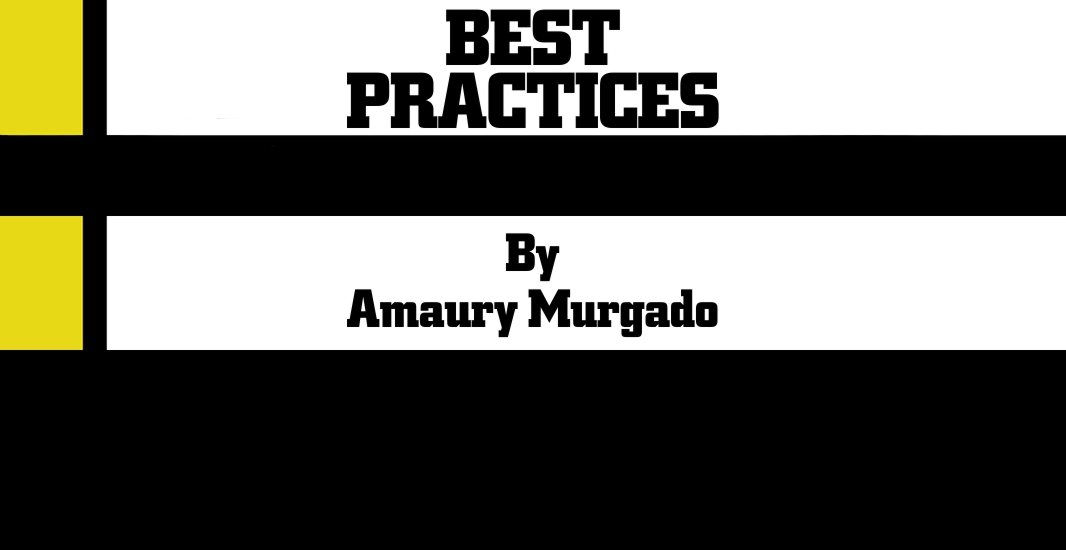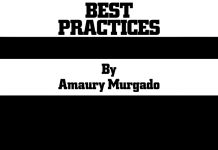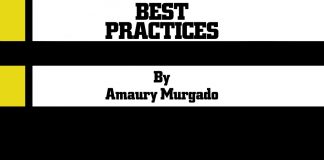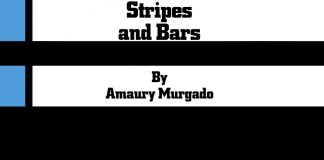We live in an age of political correctness where saying the right things seems to have more value than doing the right things. People use catch phrases to draw attention to themselves and make them seem wise and caring. A good example of this is when managers falsely refer to an organization as a team and promote teamwork as a guiding principle. It’s been my experience that people use the word “team” incorrectly and that managers just pay lip service to teamwork.
These types bring out an infomercial response in me. As soon as they open their mouths and start talking in catch phrases, I want to change channels. Who hasn’t dealt with a phony that’s used iconic phrases like “There is no ‘I’ in team,” or “T.E.A.M. stands for Together Everyone Achieves More?” One of my favorite lines is “Teamwork is the fuel that allows common people to attain uncommon results.” What exactly does “common people” mean? Am I left to believe that I’m a diamond in the rough or just plain rough?
Don’t get me wrong; motivational sayings and acronyms can be great tools in the hands of sincere people. In the hands of a phony, however, all that’s created is discord. I get amused when someone joins the phrase of the month club just to sound like she knows what she’s talking about. There are managers that routinely espouse the virtues of teamwork but wouldn’t know the true meaning of the word if it hit them in the face.
One of my favorite examples of this occurred during the Y2K scare. All forms of government, big and small, were preparing for the possibility of an infrastructure meltdown; all except for the agency that I was working for at the time. The sheriff back then thought it was nonsense and a waste of time. Luckily, the patrol captain thought better of it and convinced the sheriff to let us go forward with a contingency plan I developed. Though I was approved to go forward, I received very little help and was often left to my own devices to get things done.
Years later I was talking about Y2K with a fellow co-worker. At one point he stopped me, and in his best infomercial voice said, “You sure like using ‘I’ a lot. You know, there is no ‘I’ in team.” I couldn’t hold back a smile as I started to change channels. I reminded him, “There is no ‘U’ in team either…because ‘U’ weren’t around to help!” I explained that when someone does something by himself, the use of the word ‘I’ is not only correct, but more than appropriate.
Tribal Myth and Posers
There are many managers that read books on team building, attend courses that improve their leadership skills, and practice what they preach. There are others, however, that don’t; instead, they take shortcuts by using tribal myth. They say things that they hear other managers, supervisors, or instructors say. They occasionally throw out a catch phrase at a meeting to sound impressive. They perpetuate what they have heard before understanding
it and checking its validity. A good example of this is when you hear someone say it takes 5,000 repetitions to make something second nature. In reality, it only takes around 300; it takes 5,000 repetitions to break a bad habit. A poser typically uses tribal myth the most. A poser is someone who acts a certain way to impress others. It’s easy to spot a poser because he will say one thing but do another. Take for instance a watch commander who gives a wonderful speech during roll call about the importance of teamwork. But what usually happens next? The watch commander goes to breakfast and is never seen again by
his troops; so much for his teamwork message. Teamwork principles aren’t supposed to be selective; they’re meant to be inclusive.
Definitions
In his book “The Five Dysfunctions of a Team,” Patrick Lencioni defines a team as being “a relatively small number of people…that shares common goals as well as rewards and responsibilities for achieving them.” If we accept this definition, then most agencies can’t be considered a team because of their organization, hierarchy, and large numbers. But an agency’s structure doesn’t stop it from using teamwork in smaller cells.
Certainly a street drug unit can function as a team during a surveillance and subsequent takedown. Road patrol squads routinely use teamwork in concert with aviation and K-9 units to apprehend suspects during in-progress calls. Many agencies assemble teams to handle specific problems like policy and procedure issues.
In his book “Teamwork 101: What Every Leader Needs to Know,” John Maxwell suggests that teamwork is nothing more than working together with other people to achieve a common goal. Adopting that definition makes teamwork a more plausible concept for an agency as a whole. It may seem that I’m splitting hairs, but let me explain further. At the agency level,
the command staff makes decisions for you. There may not be an ‘I’ or a ‘U’ in team but there is no “they” either. And “they” make the agency-wide decisions that we follow. I’m not saying that’s a bad thing, just that we need to learn the differences between being an organization, a team, and using teamwork.
Team Dysfunctions
Sometimes the best way to learn about something is to first identify what it’s not. Another way to learn is to identify the problems associated with it. If I learn the pitfalls then I know what to avoid. Patrick Lencioni’s book has already established five team dysfunctions (pitfalls) for you. The first is an absence of trust. The fear of being vulnerable within the team prevents the building of trust. If you’ve developed trust then you don’t have to be protective and careful with what you say. It’s hard to do your job when you have to split your attention between the mission and watching your back.
The second is a fear of conflict. Since no one wants to rock the boat, an artificial harmony is created but nothing is ever discussed in earnest. You want to emerge from heated debates knowing that there are no residual feelings that can bury you later. It is very possible to agree to disagree in a professional manner.
The third is having a lack of commitment. It’s all about the mission and choosing the best course of action. It’s not what’s best for you but for the agency as a whole. However, there does need to be a sense that you have a voice and that your opinions are valued. In the end, everyone wins.
The fourth is the avoidance of accountability. You must be able to hold each other accountable and avoid hurting the team and its results. Being accountable translates into respect for each other and holding the team to higher standards. If there were more accountability in law enforcement, we’d have fewer problems.
The last dysfunction is inattention to results. You must have clearly defined objectives, defined outcomes, and be honest with your results. If you are not going to take a long hard look at your results and evaluate yourselves, what was the point? If all you are looking for is a paper tiger, count me out; I have better things to do with my time.
Laws of Teamwork
Another useful reference is “The 17 Indisputable Laws of Teamwork,” by John Maxwell. Though I won’t be going over all 17 laws, there are a few that you could use now. You don’t have to be on a team to be a team player.
The Law of the Big Picture: The goal is more important than the role. Individual accomplishments help the ego but it takes everyone working on the goal to get it accomplished. If you’re not helping to accomplish the mission, then you’re not helping at all.
The Law of the Chain: The strength of the team is impacted by its weakest link. Who hasn’t been affected by this in one form or another? You have to know when to raise the bar or face being left behind. You shouldn’t have to pick up anybody’s slack. Get the slacker up to speed or get someone else.
The Law of the Bad Apple: Simply put, dealing with a bad attitude is like having a boat anchor around everyone’s neck. I don’t care how talented or in shape you are. If you act like a prima donna, can’t play well with others, and all you do is complain, I don’t need you. Prima donnas are great for reality TV but lousy for law enforcement. I’ll take an average person with a good attitude and willingness to learn any day.
The Law of Communication: Creating change in an organization requires communication.
You must be able to communicate effectively with your peers and supervisors. If your lines of communication are restricted, closed, or merely pretend, there will be no change.
Putting it to Use
Understanding the makeup of a team and how to use teamwork will make us all more effective. We need to dump tribal myth and stop just repeating what sounds good. We need to stop tolerating posers and develop real skill sets. As law enforcement officers we need to strive to be more team-like, and definitely use more teamwork in our day-to-day operations. Leave infomercials where they belong and focus on accomplishing the mission by using true teamwork and becoming a better team player.
Teamwork Tips
- Understand the concepts behind an organization, team, and teamwork.
- Learn about the pitfalls of a team and how to avoid them.
- Stop promoting tribal myth and find out what’s real.
- Stop posers by holding them accountable.
- Learn to be a better team player and leave your ego at home.
Amaury Murgado is a special operations lieutenant with the Osceola County (Fla.) Sheriff’s Office. He has 24 years of law enforcement experience, is a retired master sergeant from the Army Reserve, and has been a lifelong student of martial arts.
Originally published in Police Magazine, March 2012






